Meet your new favorite lazy-but-luxe dinner: Garlic Peanut Noodles.
These noodles are rich, slurpable, and bursting with flavor thanks to a sizzling garlic-soy-peanut sauce that’ll make your kitchen smell like heaven.
Think: chewy, bouncy noodles tangled in a creamy, savory peanut sauce that’s perfectly rich without being heavy (even Max, a lifelong peanut butter skeptic, devours these). A shower of scallions, crunchy peanuts, crisp veggies, and a spicy kiss of chili crisp takes them over the top.
They’re inspired by Chinese-style peanut noodles, but with a little Rainbow Plant Life flair: a little indulgent, super customizable, and easy to make in less than 30 minutes.
Table of Contents:
1. Why you’ll love this recipe
2. Ingredient notes
3. Step-by-step instructions
4. Tips for making this recipe
5. Frequently Asked Questions
6. Video instructions
7. Recipe card with notes
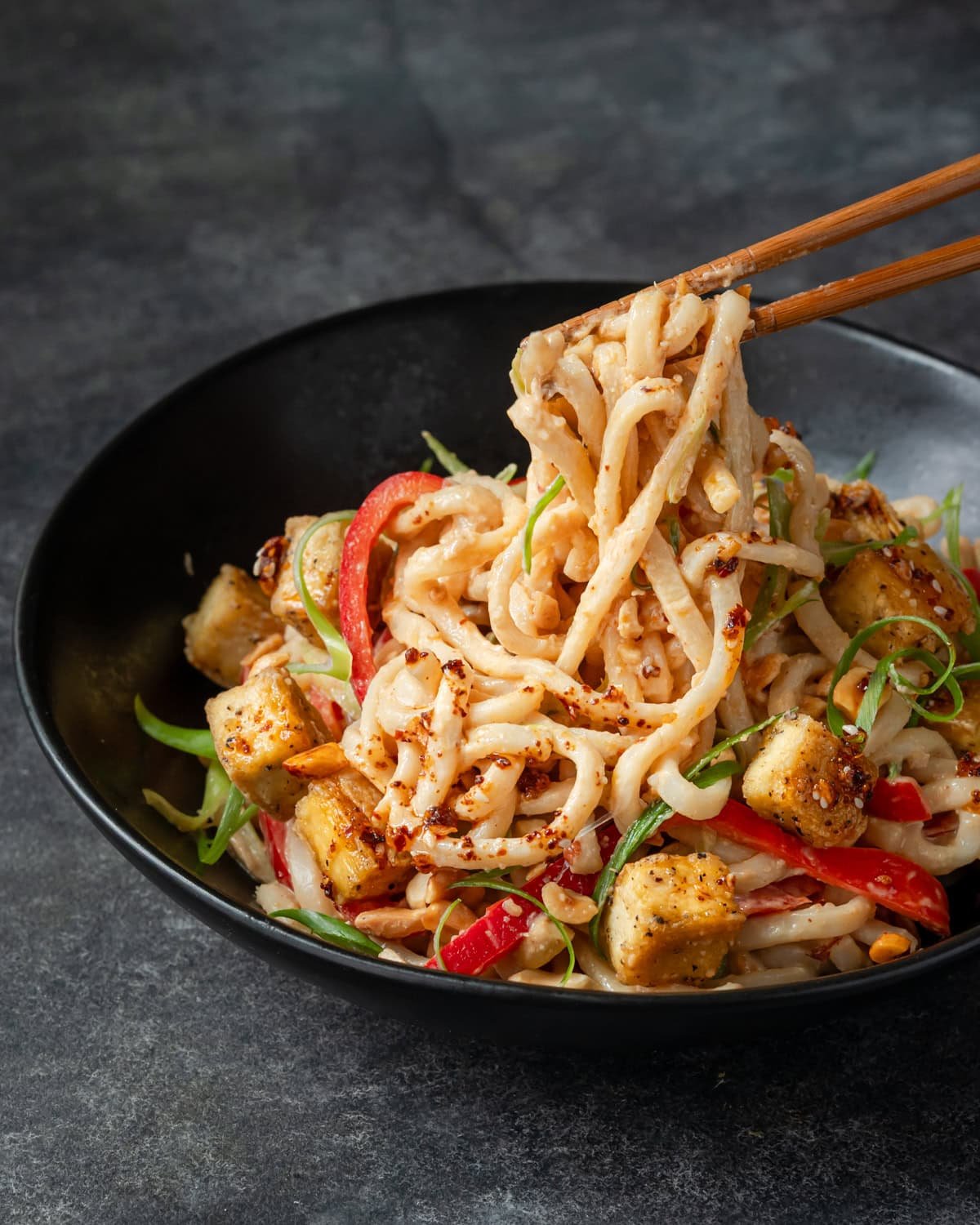
Why you’ll love this recipe
Peanut Noodles, Upgraded
Sure, TikTok is full of peanut noodle recipes, but these? These are on another level. We’re talking sizzling hot garlic oil paired with soy sauce, rice vinegar, white pepper, and a kiss of brown sugar to wake everything up.
When mixed with creamy peanut butter, it transforms into a rich, nutty, and deeply flavorful sauce that perfectly coats the noodles.
Quick and Satisfying
Need a delicious meal on a busy weeknight? This recipe comes together in less than 30 minutes using mostly pantry staples. It’s an ideal solution for those evenings when the fridge is nearly empty, but you’re craving something hearty and satisfying.
Indulgent Yet Balanced
These noodles are the epitome of comfort food—creamy, savory, and utterly indulgent. Yet, they offer a good dose of plant-based protein from the peanut butter and peanuts (19g per serving).
For an extra protein boost, fold in some edamame or baked tofu, as listed in the recipe card for a meal that feels decadent but still keeps you nourished.
Ingredient notes

Noodles
As mentioned, this dish is super customizable. I love using fresh or shelf-stable udon noodles like these, but when I don’t have those on hand, dried udon noodles work just as well (affiliate links).
Honestly, almost any noodle will do—fresh or dried—as long as it’s not too thin (super thin noodles tend to get a little overwhelmed by the rich sauce). Can’t find any noodles? Even linguine will work!
You can buy fresh, frozen, and shelf-stable udon noodles at East Asian markets (or shelf-stable online). If you have a Trader Joe’s near you, their “Thai Wheat Noodles” are a good option.
Be sure to check the Tips section below to get the right quantity of noodles based on the type you’re using.
And if you’re gluten-free, hop down to the FAQ section for some easy swaps!
Peanut butter (and peanuts)
Of course we need peanuts for peanut noodles! This recipe uses creamy peanut butter for that luscious, silky sauce, plus a handful of chopped roasted peanuts stirred in at the end for texture and crunch.
Shopping tips:
- Stick with creamy peanut butter (chunky doesn’t quite work here).
- Go for a natural brand with no added sugar. Added salt is fine though.
- For the chopped peanuts, both salted and unsalted work. Salted will give you a little extra oomph, but either one is great.
Garlic
This recipe leans on one of my favorite techniques from Chinese cooking: sizzling oil infusion.
Basically, you heat up oil until very hot, then pour it on top of aromatics, like minced garlic or chilies. It’s the cornerstone of many Chinese condiments like chili oil and scallion oil, as well as some of my favorite recipes, like my Chili Garlic Noodles and Napa Cabbage Salad.
Here, a small amount of super-hot oil is poured over raw garlic. The result?
- The garlic loses its raw bite but keeps its punchy garlic flavor.
- The oil pulls out garlic’s fat-soluble compounds for even more depth of flavor.
- The oil becomes infused with garlicky goodness, which goes straight into the peanut sauce.
It’s one of the little steps that really sets these noodles apart—so don’t skip it!
Soy Sauce
While this dish isn’t authentically Chinese, it’s definitely inspired by Chinese flavors—and that means soy sauce is a must. It brings a savory, salty depth that makes every bite more addictive than the last.
Looking for a more classic Chinese dish? Try these Chinese Sesame Noodles!
Tips for buying: I typically use Chinese light soy sauce in my cooking, but any basic grocery store soy sauce works too. If you’re gluten-free, tamari or gluten-free soy sauce are great alternatives.
Rice vinegar
Rice vinegar adds a subtle tang that brightens up all the richness from the peanut butter and soy sauce. It’s that balance that makes the sauce feel really complete.
Tip: I always use unseasoned rice vinegar, unless noted otherwise.
Brown sugar
It might seem surprising, but a touch of sugar in a savory noodle dish is key. It helps round out the saltiness of the soy sauce and the richness of the peanut butter, adding balance and depth.
White pepper
I love using white pepper in Chinese-style dishes. It’s a bit earthier and brighter than black pepper, with a hint of ginger that works so well with garlic and soy sauce. If you haven’t tried it yet, this recipe is a great excuse!

Step-by-Step instructions
Slice the scallions thinly on a bias, then soak in a bowl of ice water while you prep everything else (this mellows out their pungency).
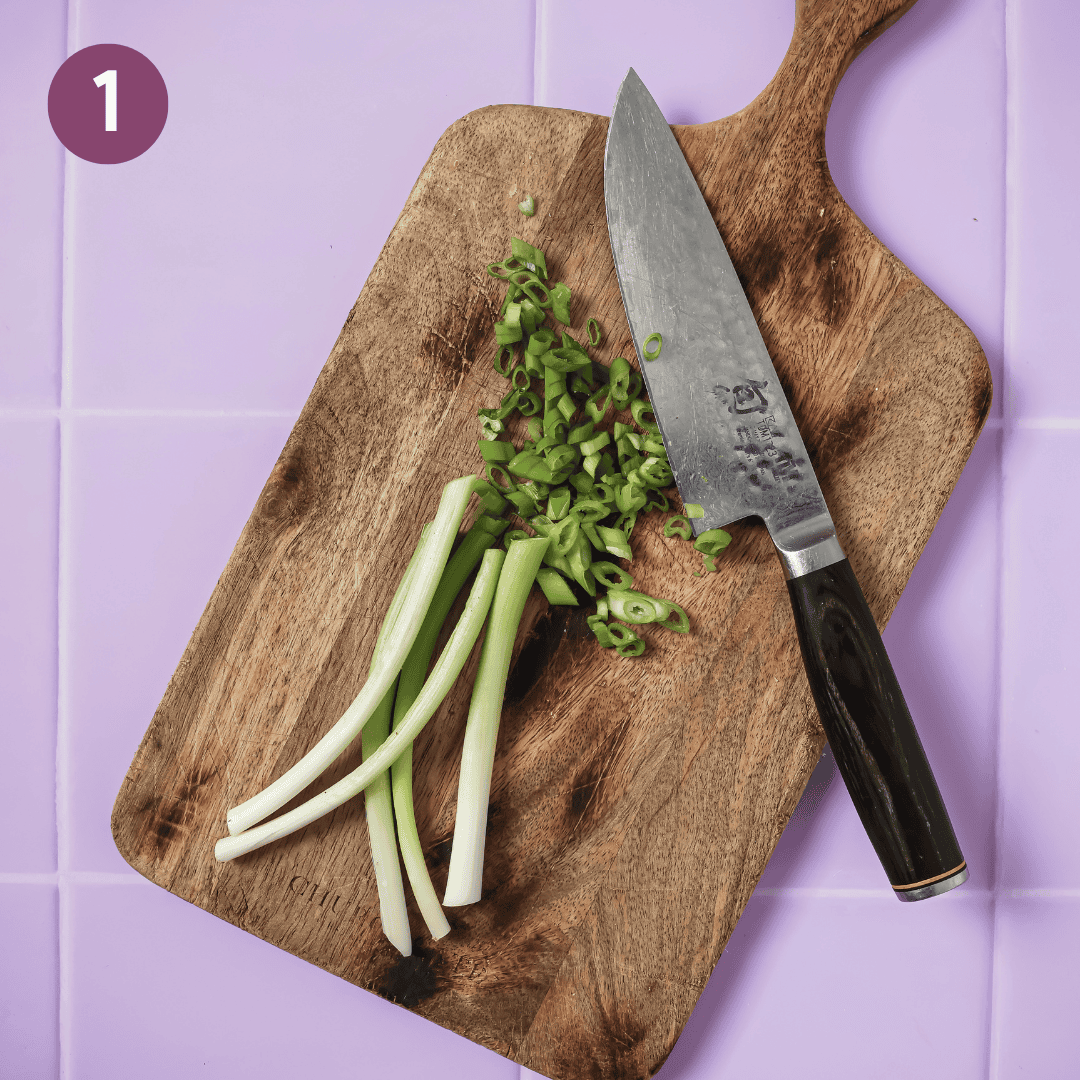

Cook the udon noodles according to the package, then drain and rinse to bring to room temperature.

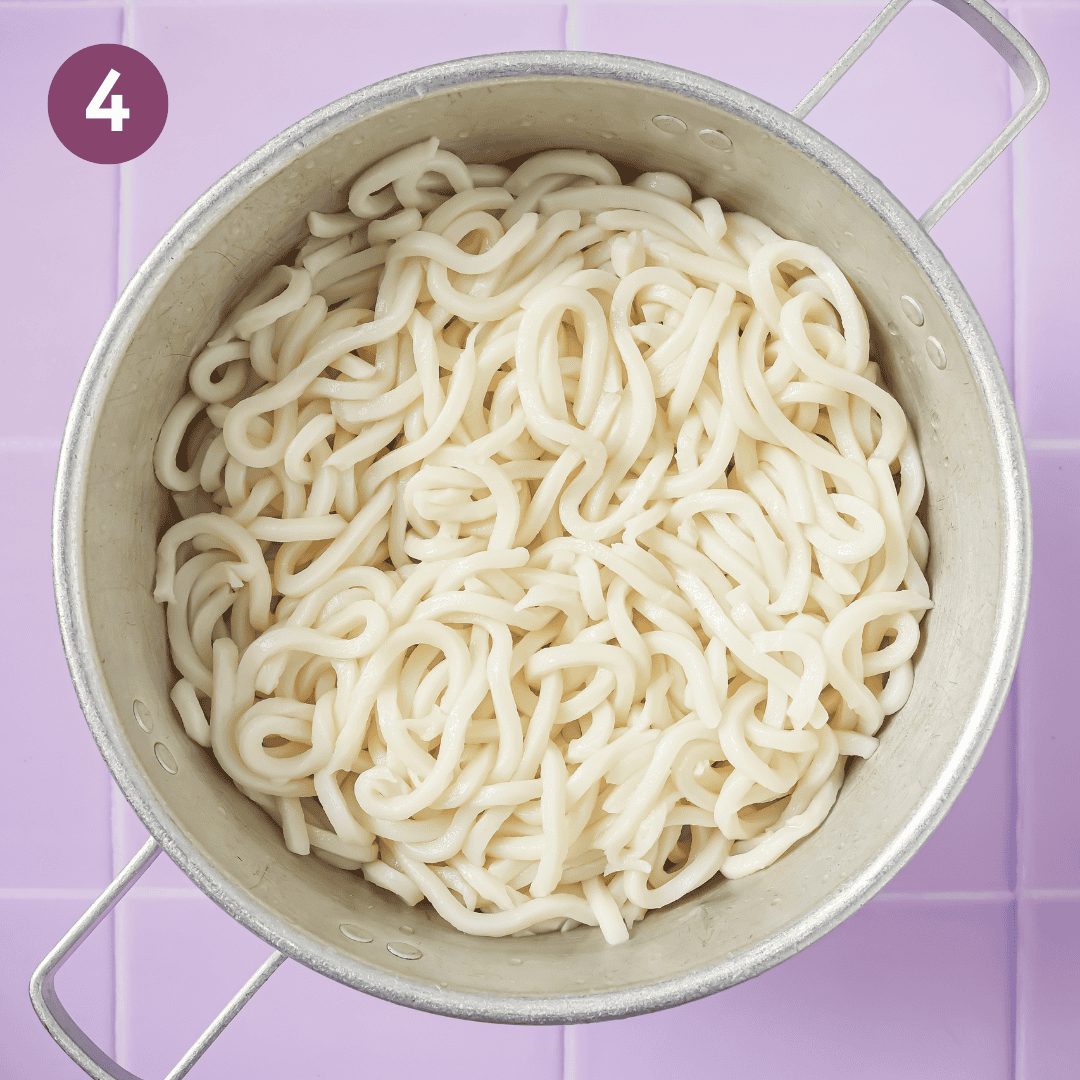
Grate the garlic or crush with a press (or finely mince). Add to a small bowl.
Heat the neutral oil in your smallest saucepan over medium heat for at least 3 minutes, or until very hot. Pour the hot oil over the garlic and allow to sizzle.
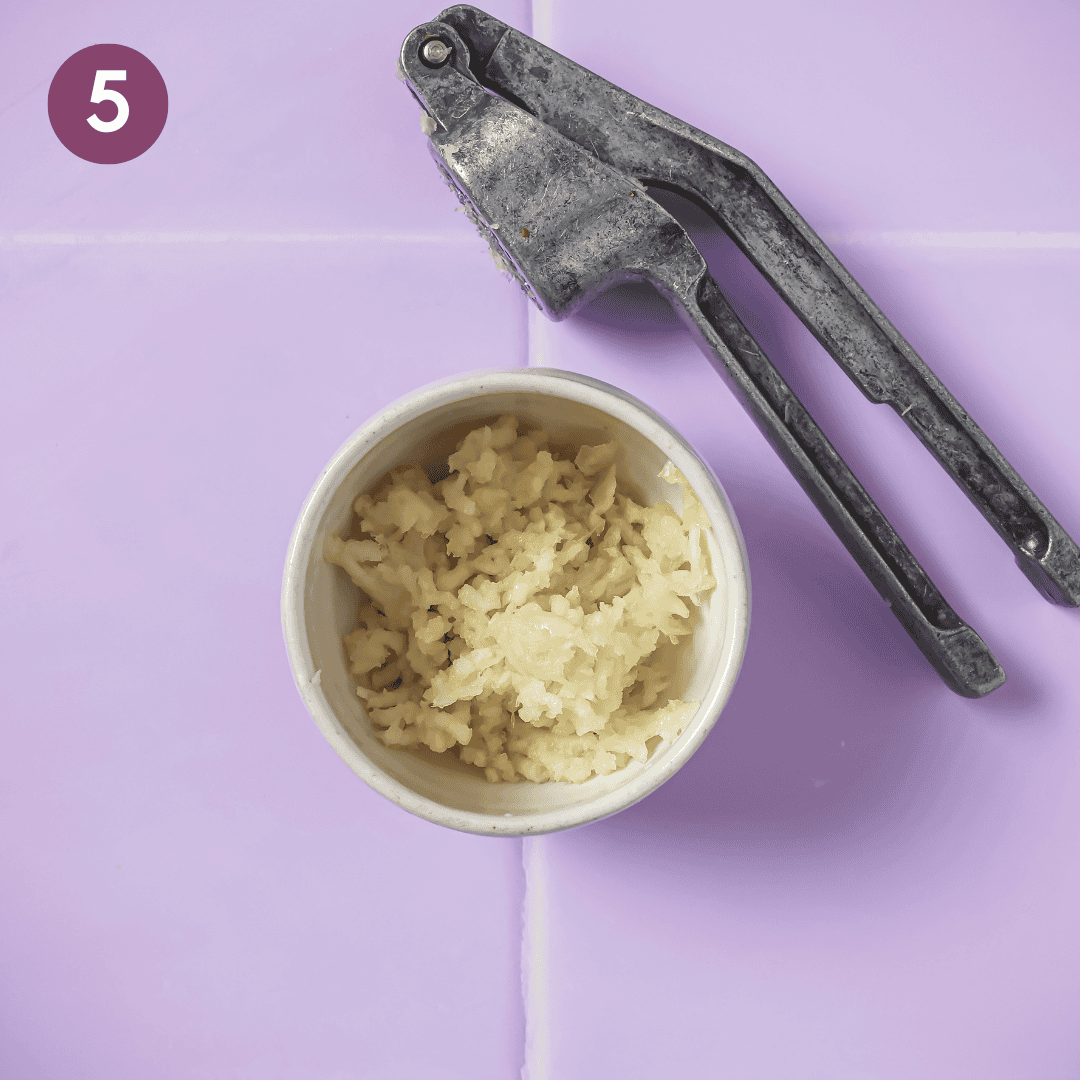
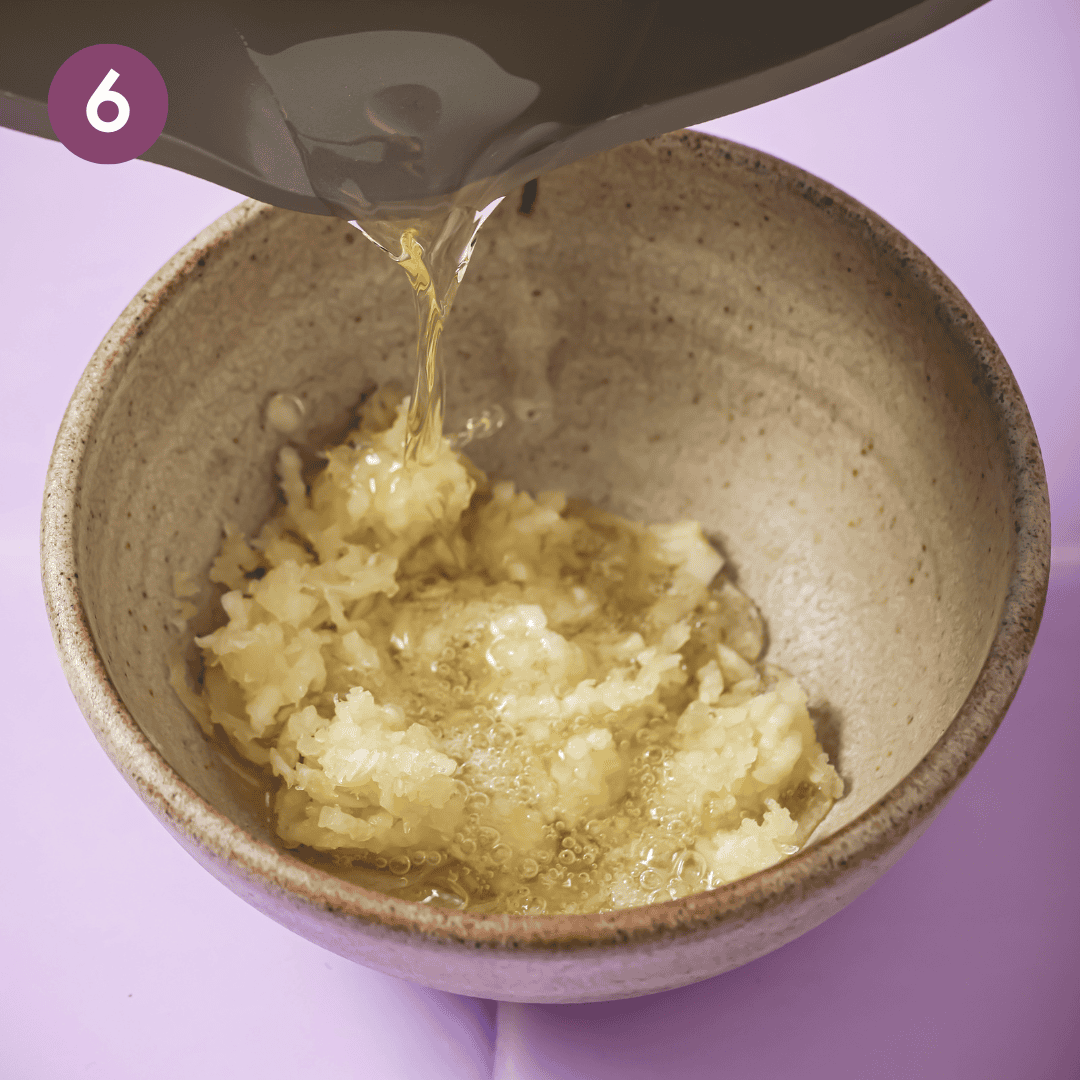
After 1 minute, pour the soy sauce, rice vinegar, brown sugar, and white pepper into the garlic oil. Whisk well to combine.
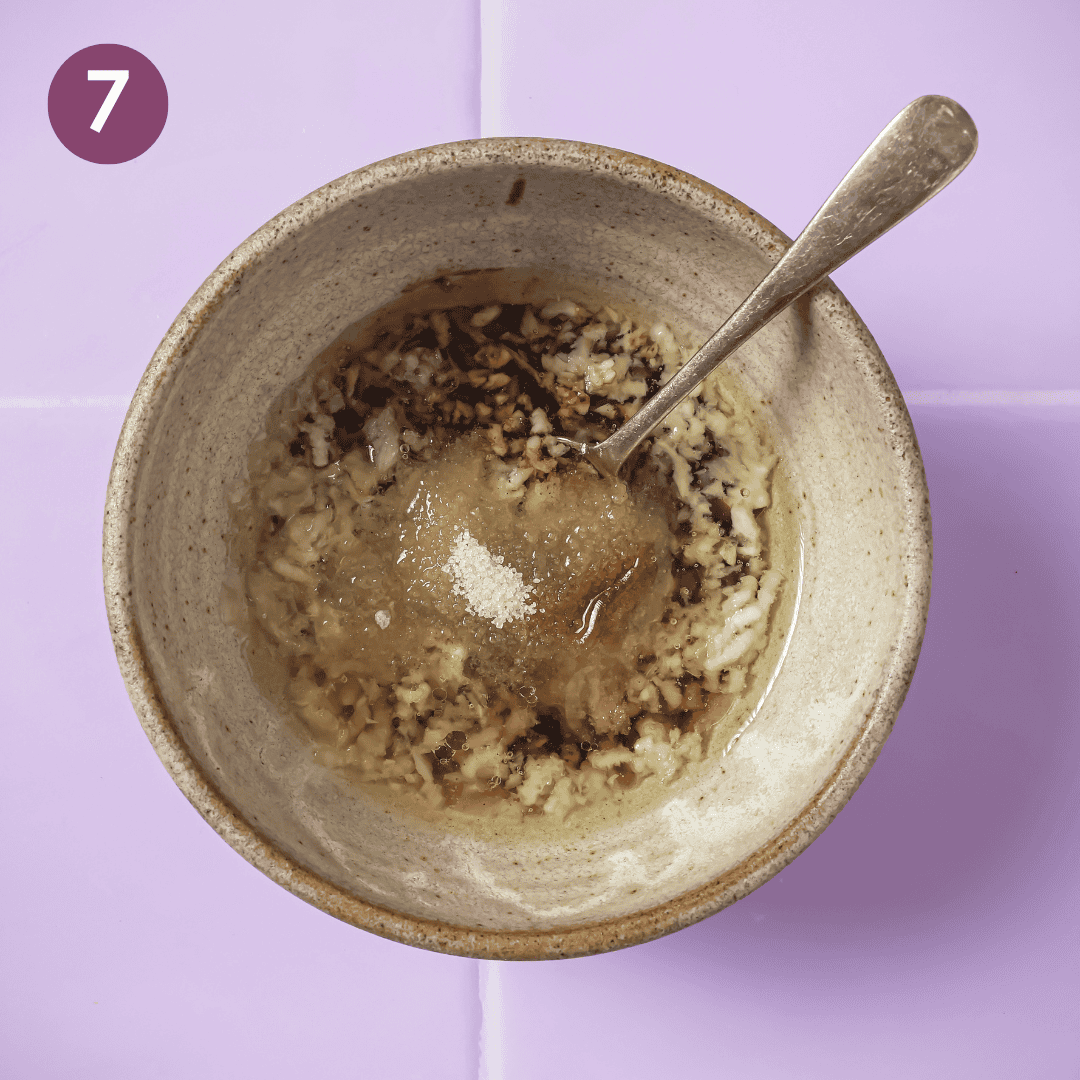
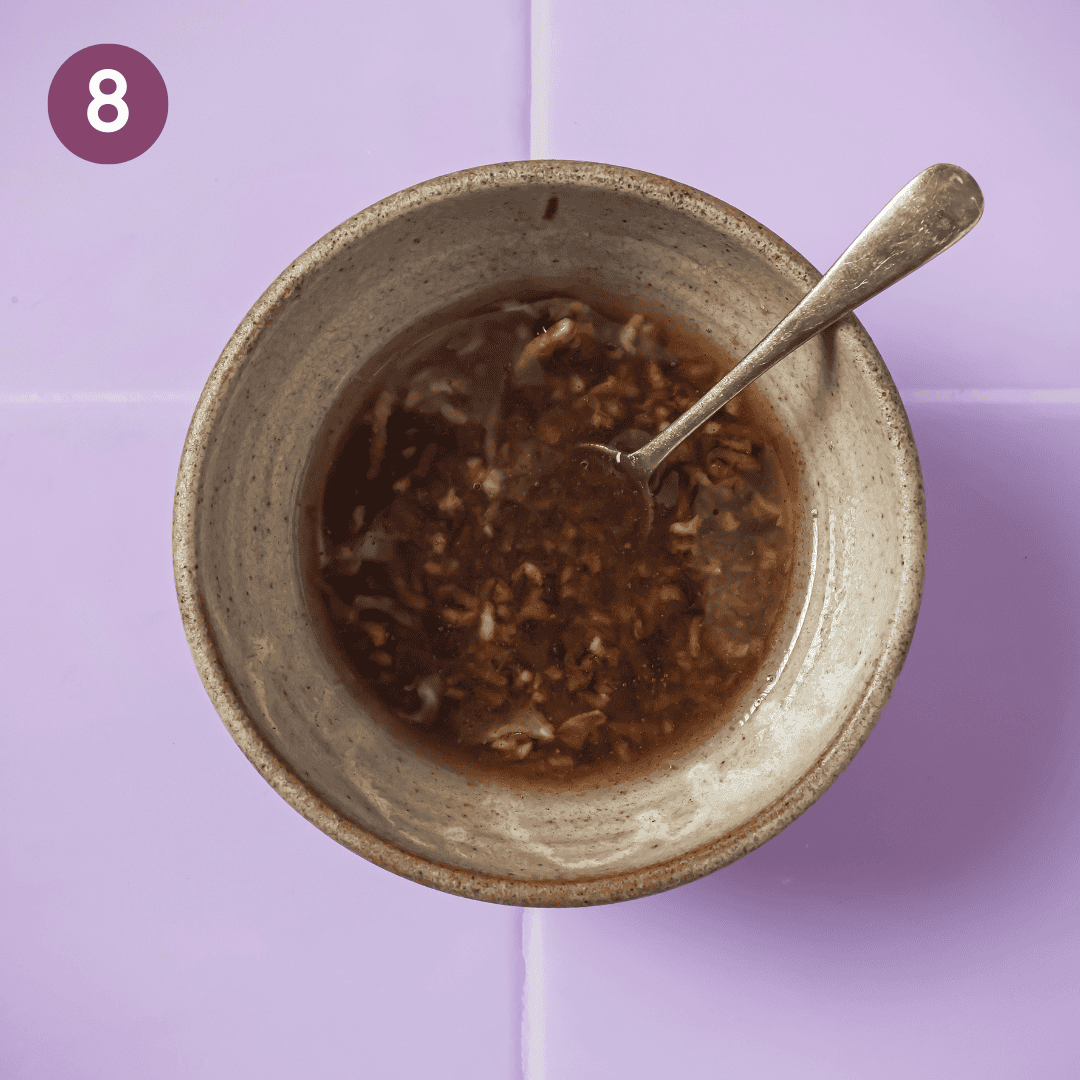
In a medium bowl, whisk together the peanut butter and hot water. Then pour in the soy sauce-garlic mixture and whisk to combine.
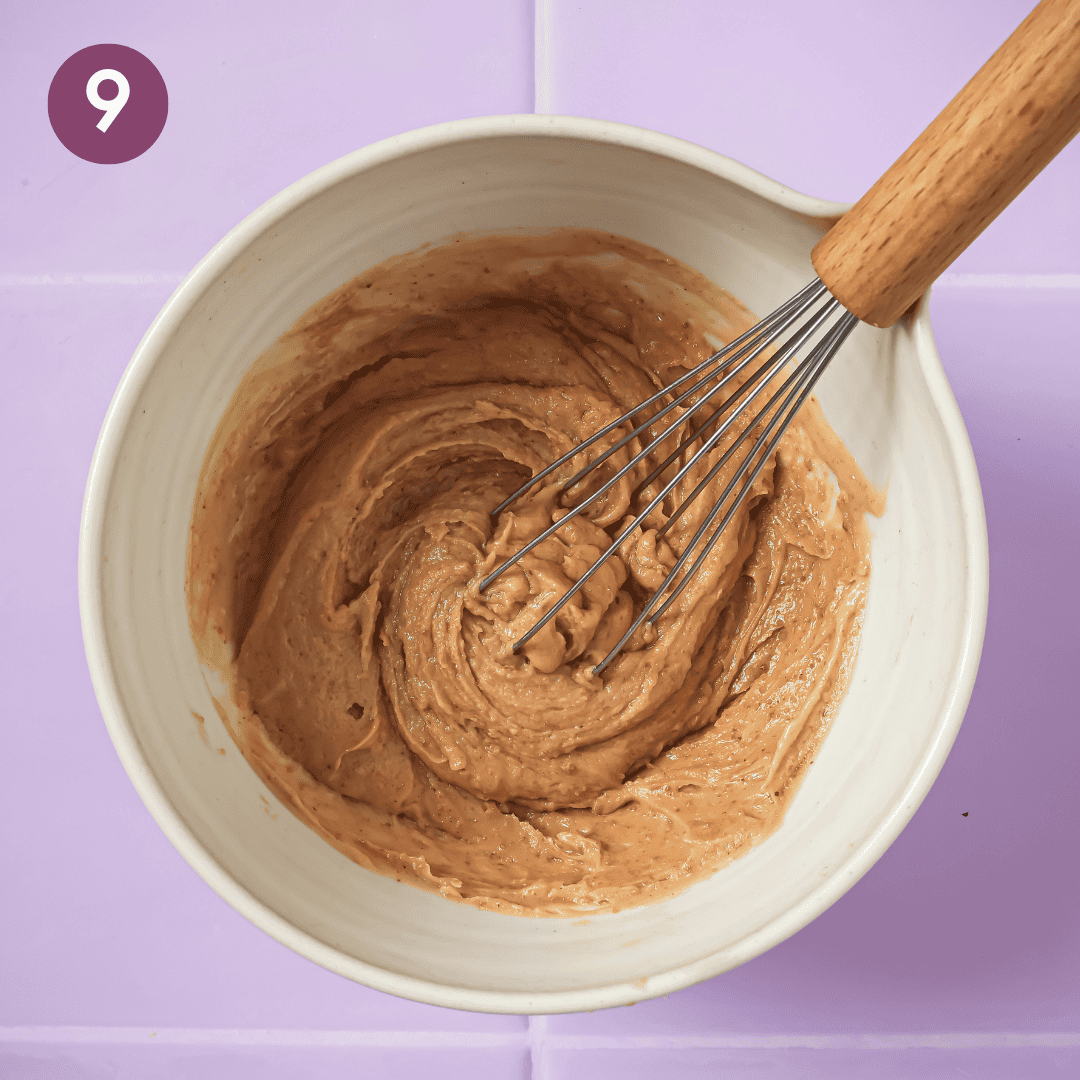

Pour the peanut sauce over the noodles and toss to coat well.
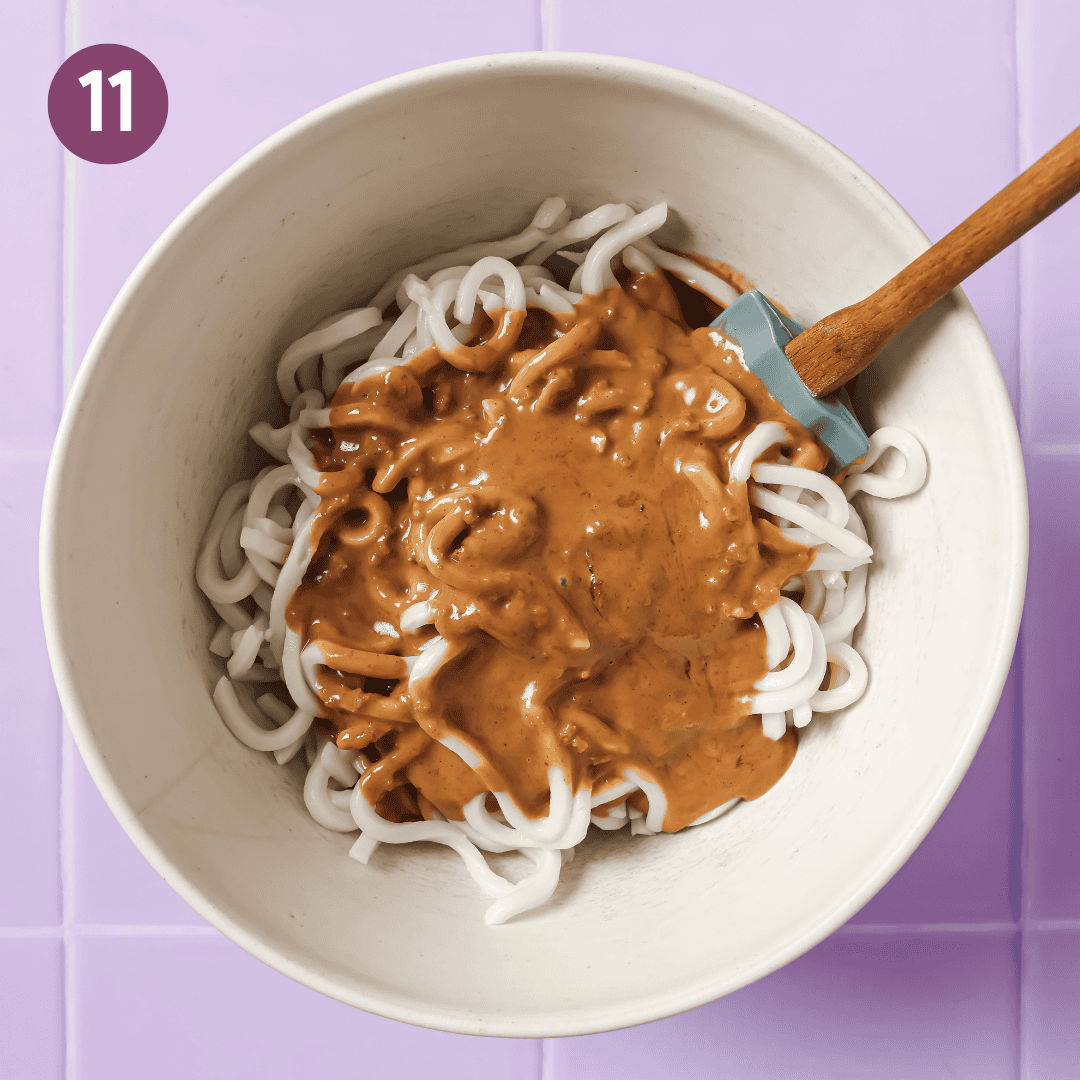
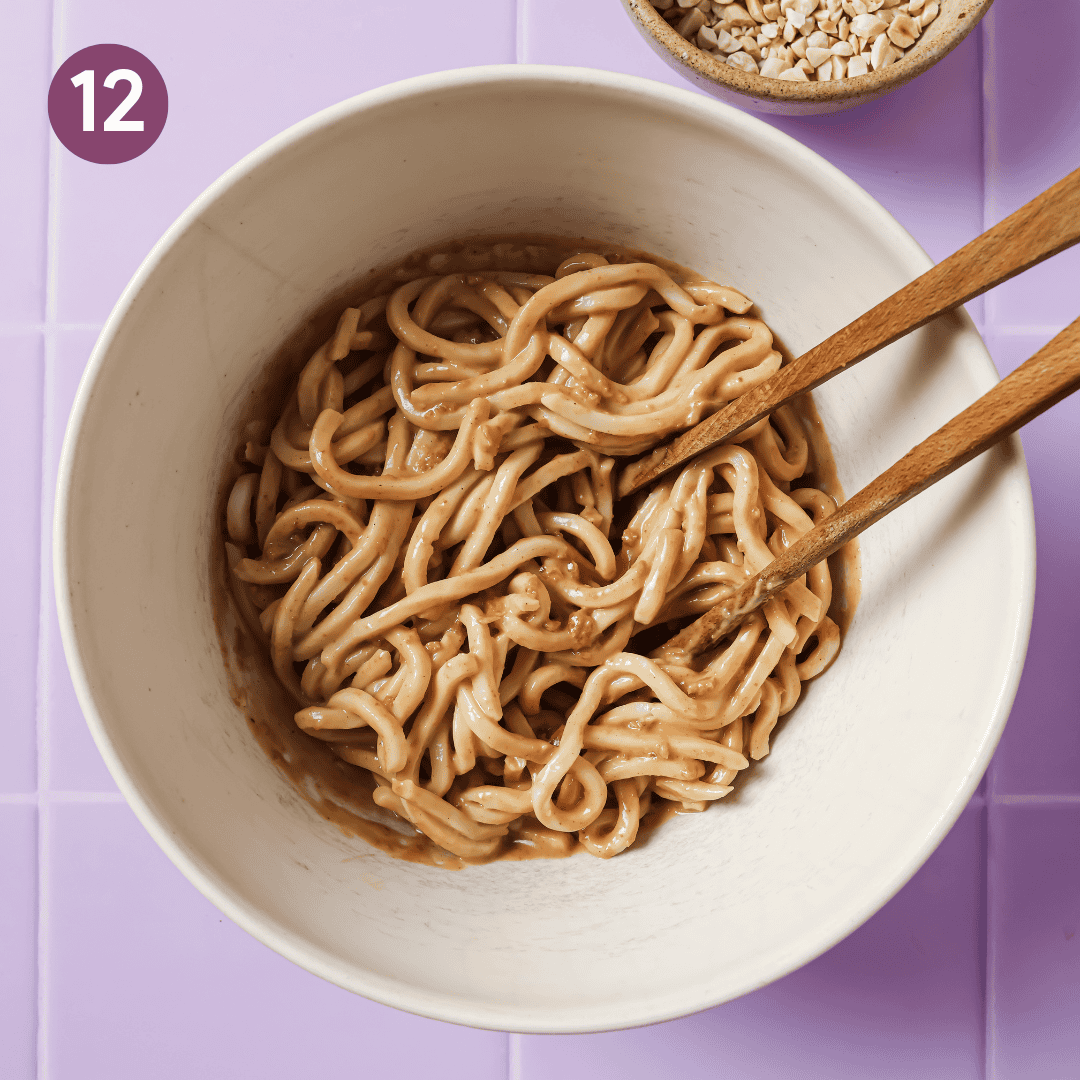
Add in the drained scallions, chopped peanuts, and sliced veggie of choice and toss again. If adding baked tofu, fold it in now.
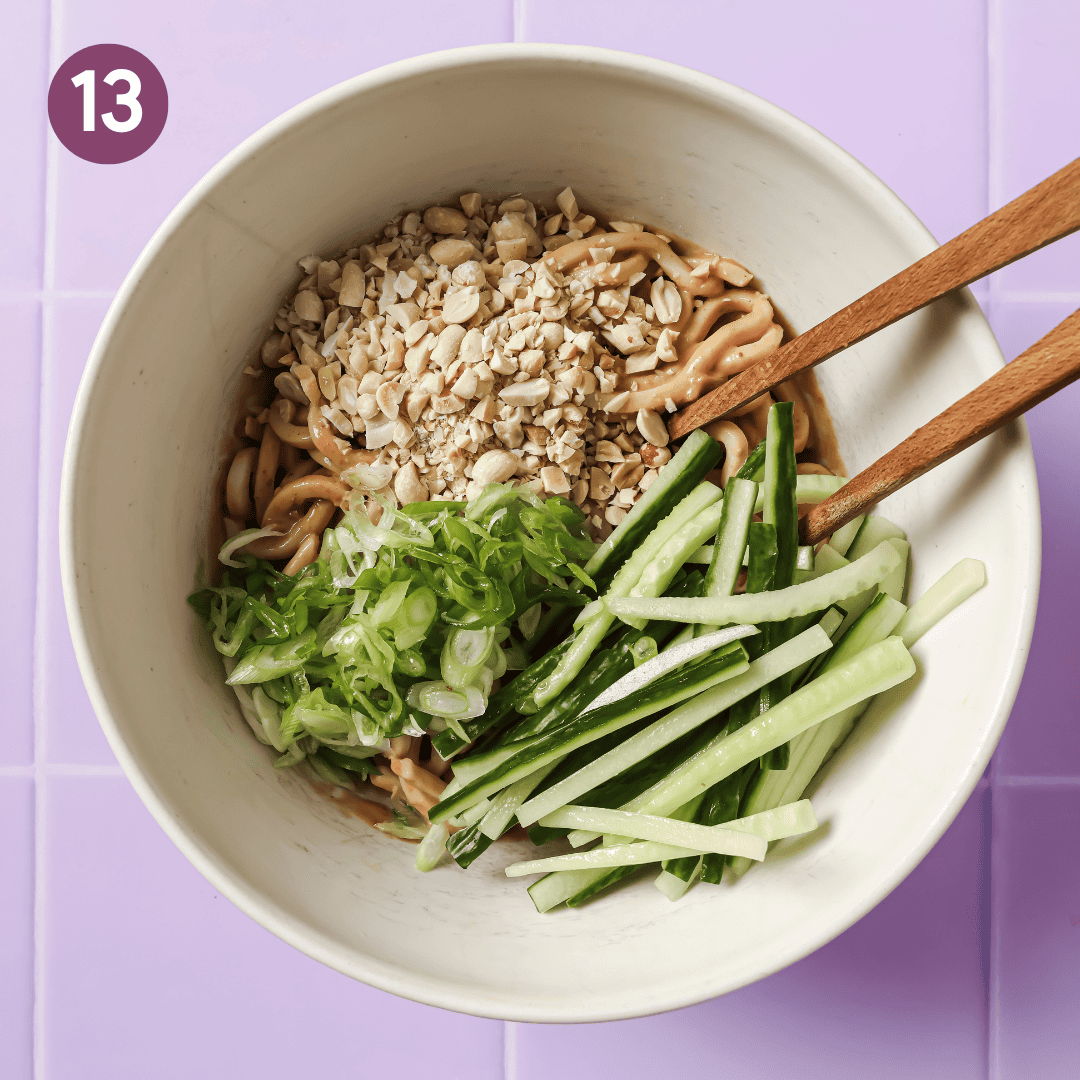
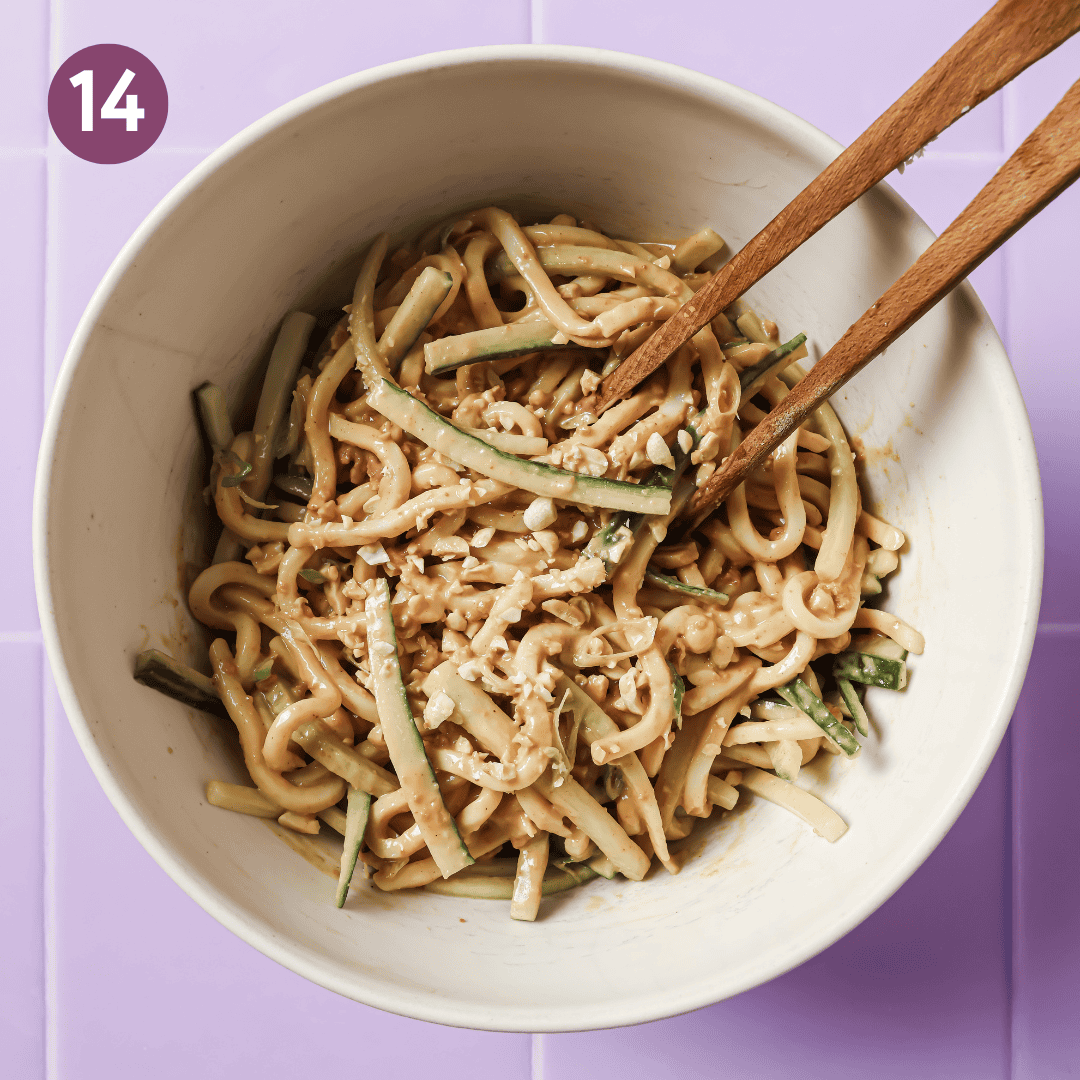
Tips for making this recipe
Use the right amount of noodles
You’ll need to use more or less noodles based on whether they’re fresh, frozen, or dried and their thickness.
Fresh udon noodles: use 20 ounces (570g)
Frozen udon noodles: use 30 ounces (850g)
Fresh noodles that aren’t as thick as fresh udon: use 10 to 12 ounces (285 to 340g); use the lower amount for saucier noodles.
Dried noodles of any variety: use 8 ounces (225g)
Add more hot water as needed
When it comes to nut or seed butter-based sauces, they tend to thicken up once they hit the noodles. If your peanut sauce feels a little too thick or tacky after mixing, just add a splash of hot water and toss again until everything is nice and silky.
A quick note:
Fresh udon noodles already contain a fair amount of moisture, so they usually need less water. Dried noodles are thirstier and will soak up more sauce, so you’ll likely need to add more water.
Check the recipe card for specific water amounts based on the type of noodles used, and adjust to taste!
Make it a full meal with your favorite protein
While I will happily slurp these noodles as is, if you want a more well-rounded meal, add a protein boost!
Some easy options:
- Stir in ~ 8 oz (225g) of edamame. I like to season mine first with a pinch of salt, a splash of rice vinegar, and a dash of soy sauce.
- Chop up your favorite store-bought baked tofu and toss it right in.
- Want a homemade option? Try this baked tofu recipe (also linked in the recipe card). Add the tofu to the oven before you start the noodles—the tofu bakes in 30 minutes, which is enough time to whip up the rest of the dish.
- If you’re an air fryer fan, check out the air fried tofu method in this video.
Double the sauce
Chances are you will love this dish so much that you’ll want to make it again. Double the peanut sauce and you can make this dish later in the week at lightning speed.
The peanut sauce should stay good in the fridge for 5 to 7 days.
Customize!
This dish is very easy to customize based on what you have on hand and what you prefer.
No fresh veggies in the crisper? Skip them entirely.
Or, instead of the red bell pepper or cucumber listed in the recipe card, use your favorite crisp veggie, such as thinly sliced napa cabbage or thinly sliced snap peas. Or serve with steamed bok choy or broccoli.
Don’t have chinese chili crisp? Finish the dish with a drizzle of toasted sesame oil and a few shakes of roasted sesame seeds for that rich, toasty finish.
And as mentioned, fold in your favorite protein of choice.
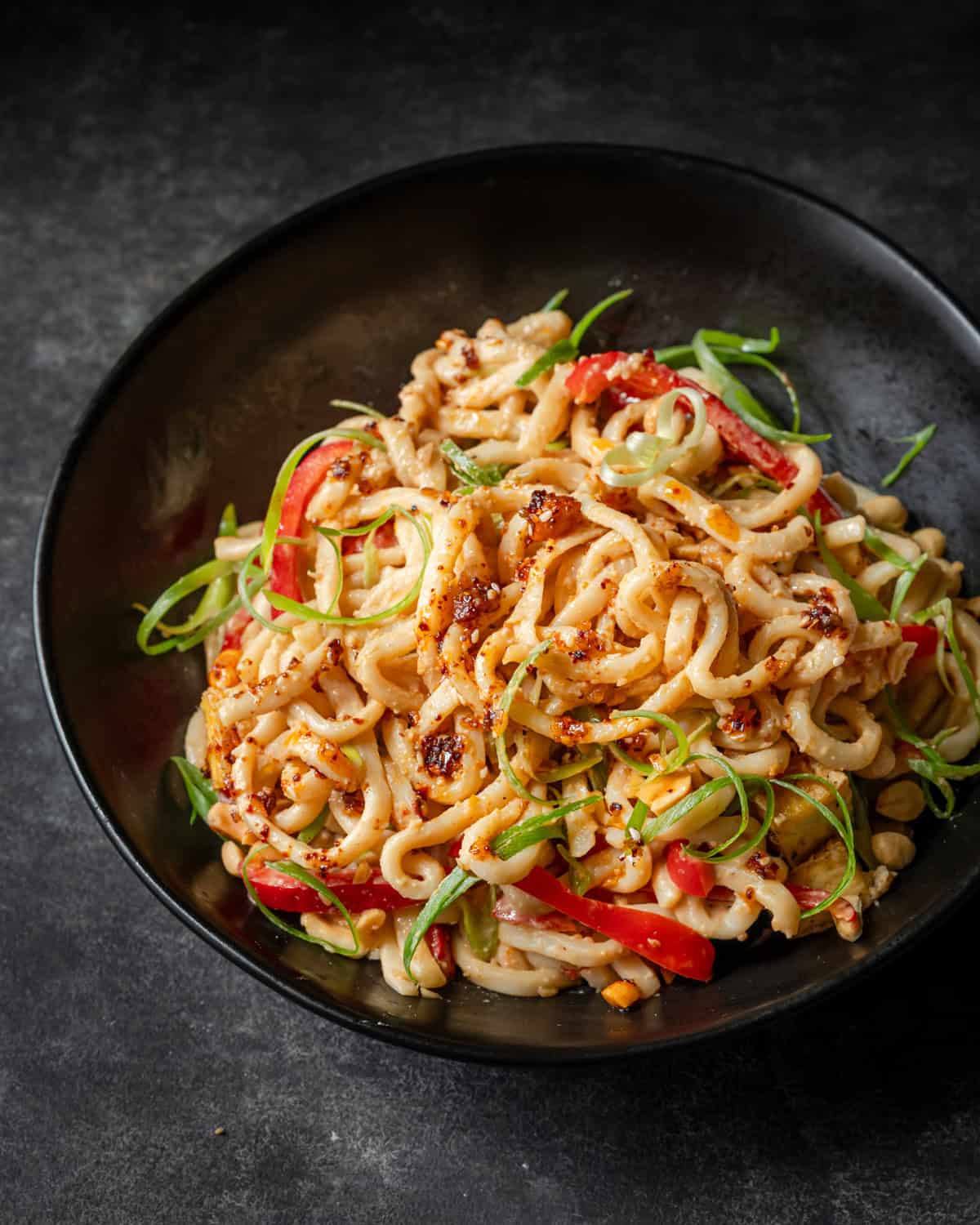
Frequently Asked Questions
Sure. Use cashew butter or tahini (or even almond butter) instead of peanuts. And instead of roasted peanuts, use roasted cashews (or roasted sesame seeds or roasted soybeans for nut-free).
Sure, you just need to make two subs.
(1) Use relatively thick rice noodles like this, not thin rice noodles like vermicelli, as those will wilt underneath nut-based sauces. (2) Use gluten-free tamari or gluten-free soy sauce.
For a complete meal, simply stir in your favorite protein!
Or, if you want to serve these as a side dish, they’d pair wonderfully with my Crispy Tofu Lettuce Wraps for an exciting summer spread.
Sure, the peanut sauce will stay good in the fridge for up to five days. It will thicken as it rests because of the nut butter, so you’ll want to add more hot water to thin it out. Check out the YouTube video below for visuals on the ideal consistency of the peanut sauce.
Store leftovers in a container in the fridge for 3 to 4 days. Leftovers will thicken when chilled because of the nut butter-based sauce.
If desired, warm up the noodles and add a splash of water to thin the sauce out. For extra flavor, freshen up with a squeeze of lime juice or rice vinegar, plus a dollop of Chinese chili crisp.
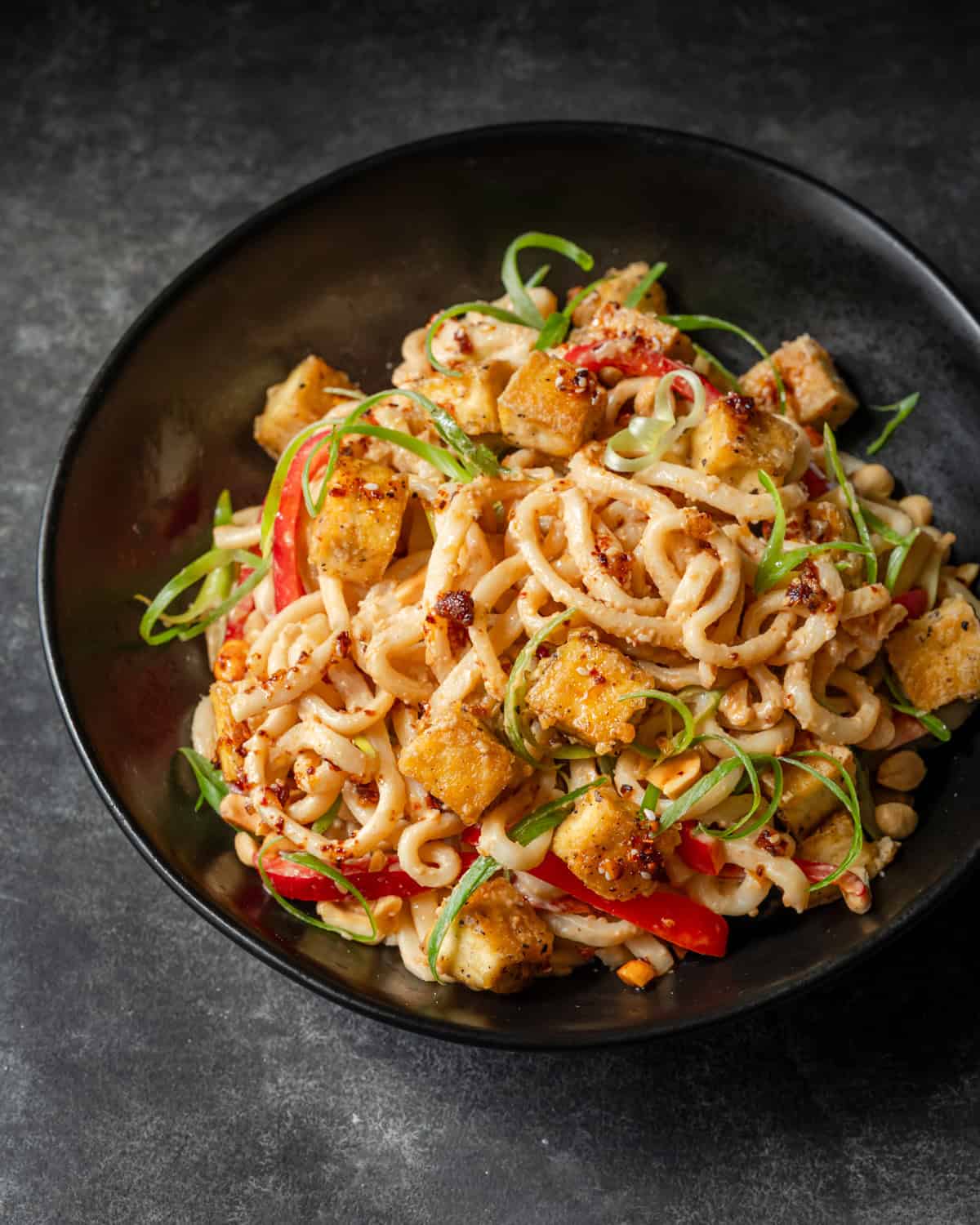
Watch: How to make garlic peanut noodles
If you try these Garlic Peanut Noodles out and love them, please give the recipe a rating and review below! And of course, tag me with your remakes on Instagram!

Big Vegan Flavor
Techniques and 150 recipes to master vegan cooking.

Introducing
Big Vegan Flavor
Techniques and 150 recipes to master vegan cooking.
Garlic Peanut Noodles
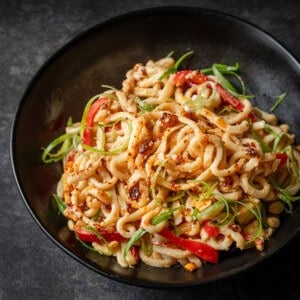
Ingredients
- 4 scallions
- 20 ounces (570g) fresh udon noodles OR 8 ounces (225g) dried udon noodles (see Note 1)
- 4 cloves garlic
- 1 ½ tablespoons neutral-flavored oil of choice
- 2 tablespoons Chinese light soy sauce (or regular soy sauce or tamari) (see Note 2)
- 1 generous tablespoon rice vinegar
- 2 teaspoons organic brown sugar (or cane sugar)
- ¼ teaspoon ground white pepper
- Heaping ⅓ cup (95g) creamy peanut butter
- 3 tablespoons to ⅓ cup (45 to 80 mL) hot water (see Note 3)
- ½ cup (70g) roasted peanuts (or cashews), roughly chopped
- 1 red bell pepper thinly sliced OR 8 oz (225g) Persian cucumber, julienned (see Note 4)
For serving (optional)
- 1 batch Baked Tofu
- Chinese chili crisp (see Note 5)
Instructions
- If you’re making the Baked Tofu, start by pressing and prepping the tofu. Make the peanut noodles while the tofu bakes.
- Bring a large saucepan of water to a boil for the noodles.
- While the water comes to a bowl, prep the scallions and garlic. a. Scallions: Trim the roots and any bruised tops. Slice the scallions thinly on a bias. Add to a bowl of cold water and soak for ~10 minutes or until done prepping (this mellows out the raw onion taste). Drain scallions and pat dry. b. Garlic: Grate the garlic, finely mince, or use a garlic press. Add garlic to a small bowl.
- Cook the noodles according to the package instructions. Drain, then rinse under cold water to bring to room temp. Transfer the noodles to a large bowl.
- Sizzle the garlic: Heat the neutral oil in your smallest saucepan over medium-high heat for at least 3 minutes, or until very hot (if you have a thermometer, it should register at 350ºF/175ºC).
- Pour the hot oil over the garlic and allow to sizzle. Rest for 1 minute, then stir in the soy sauce, rice vinegar, sugar, and white pepper.
- Mix the peanut sauce: If using fresh udon, measure out 3 TBSP hot water (45 mL). If using dried udon, measure out ⅓ cup (80 mL). In a medium bowl, whisk together the peanut butter and hot water until it’s loosened. Add in the soy sauce-garlic mixture and whisk until smooth.The sauce will be quite thin at this point, but it will thicken as it coats the noodles.
- Pour the peanut sauce on the noodles, tossing to coat the noodles well with tongs. If it feels too thick or tacky, add 1 to 2 tablespoons of hot water. Stir in the drained scallions, chopped peanuts, and optional veggie of choice. Taste, adding a splash of soy sauce or rice vinegar, if desired. Fold in Baked Tofu, if using.
- Top each serving with a bit of chili crisp.
Video
Notes
- For fresh or shelf-stable udon noodles, use 20 oz (570g). If using dried udon noodles or any other dried noodle, use 8 oz (225g). If you have frozen udon noodles, use 28 to 30 oz (800 to 850g). If gluten free, use relatively thick rice noodles.
- Don’t have Chinese light soy sauce? Use any grocery store brand of soy sauce; you may want to add just a splash more, as it’s less salty. Gluten free? Use GF soy sauce or tamari.
- Use the lower amount of water for fresh noodles; the higher amount for dried noodles.
- Or use another crunchy vegetable, such as shredded napa cabbage or carrots. Or serve noodles with steamed or sautéed broccoli, bok choy, green peans, or snap peas.
- If you have my cookbook Big Vegan Flavor, the Chinese Chili Crisp from page 187 is incredible here. If using store-bought chili crisp, I like Lao Gan Ma, Momofuku, Mama Teav’s, & Fly By Jing (affiliate links). Don’t have chili crisp? Finish the dish with a drizzle of toasted sesame oil and a few shakes of roasted sesame seeds.
Nutrition
Nutrition information is automatically calculated, so should only be used as an approximation.



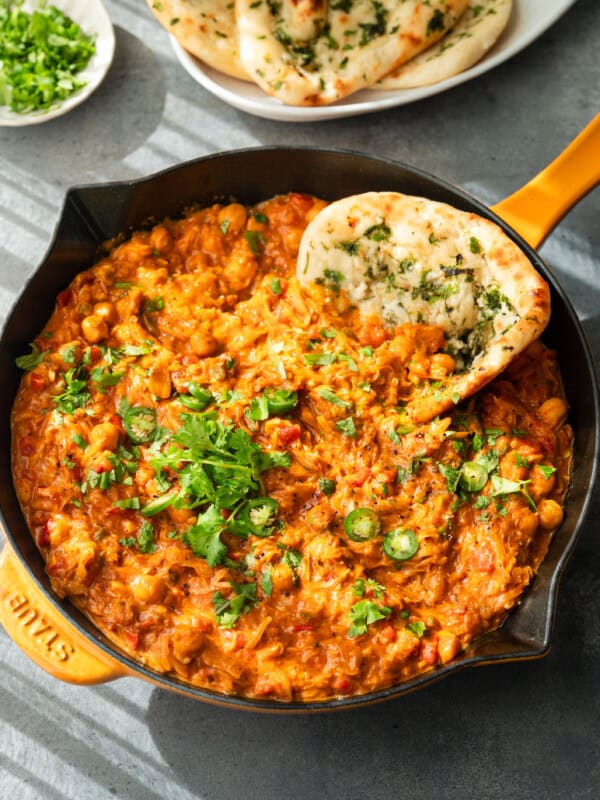
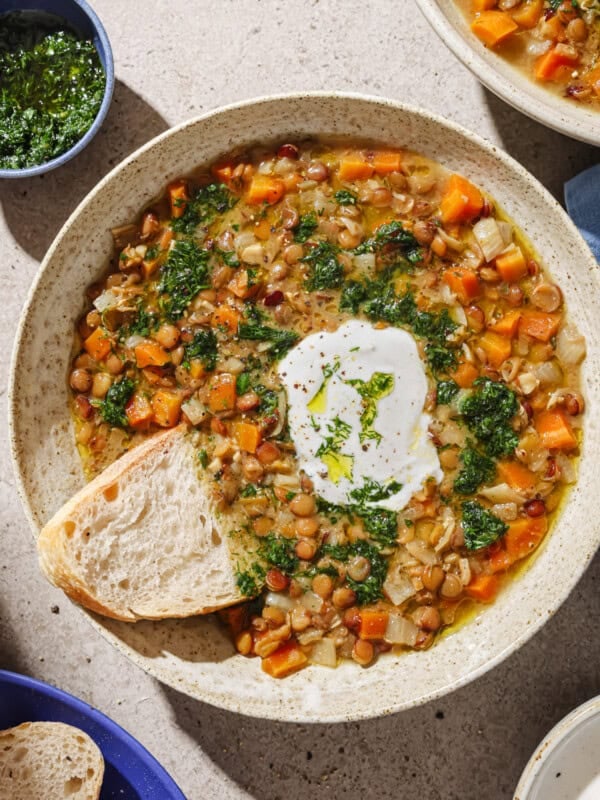
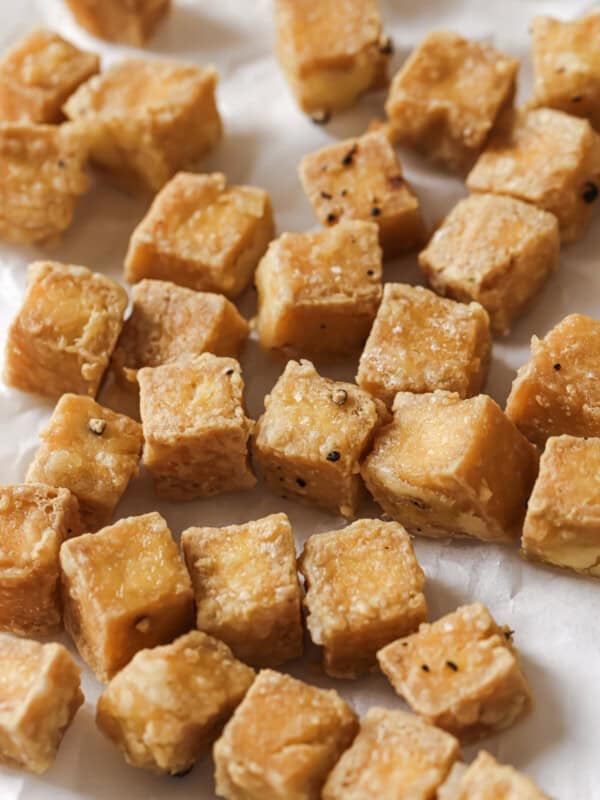
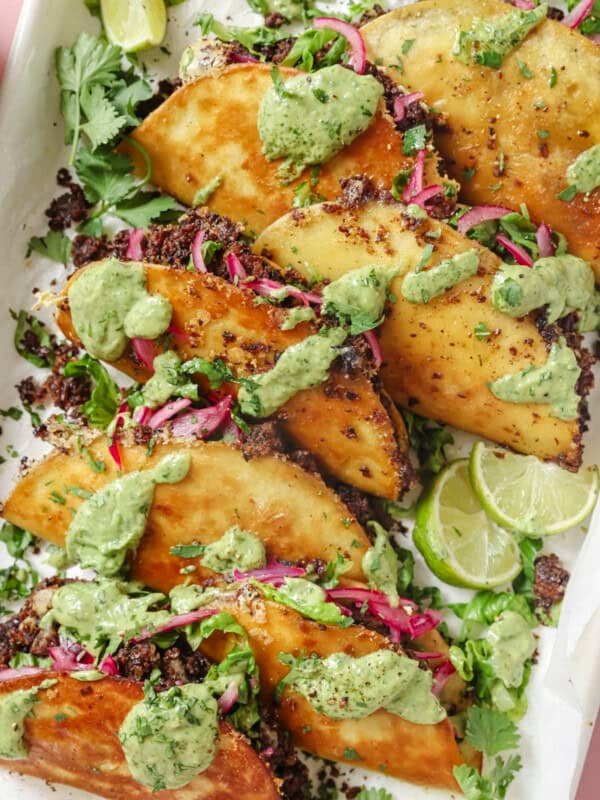









Can I substitute rice for the noodles?